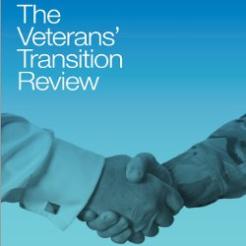A report by Lord Ashcroft has called for more consolidation in the armed forces charity sector, as he suggests that for each organisation there are only eight service users.
The Veterans' Transition Review says that the number of armed forces charities helping the vulnerable is significantly more than the number of those who are likely to need help.
Ashcroft says that 350 charities in the field amount to one for every 57 individuals leaving the services this year. Given that only 14 per cent of service leavers fall into the vulnerable category, there is in effect one charity for every eight service leavers each year that are actually likely to need help.
However, Lord Ashcroft did add that most of these charities provide for more than just service leavers, including those still serving, their families and other veterans.
Lieutenant General Sir Andrew Ridgway, chair of the Confederation of Service Charities, Cobseo, has disagreed with Lord Ashcroft’s point about there being too many service charities.
He told civilsociety.co.uk: “Actually I think he has missed the point, that the diversity of the sector is actually a huge strength, not a weakness, because it ensures all the needs of our potential beneficiaries are met.
“Where there is a need and people get together to satisfy that need, then that is a good thing. It means that communities right across the nation are involved with charitable support across the community.”
Focus on charities' message
The report, published this week also suggests that charities should consider how messages and images used in their communications contribute to society’s overall view of service leavers and veterans, particularly in regards to mental health.
Lord Aschroft said: “I would also like to encourage charities to consider how the messages in their communications contribute to society’s overall view of former service personnel.”
Again, Sir Andrew disagrees on this point.
He said: “I don’t think it is the charities that are creating that, it is the media. It is how you interpret the facts.
“Every now and again a member of the media will pick up the facts and spin it in a negative way and that is unfortunate as while it might generate some funds for a charity, it actually undermines the status of our veterans, and undermines recruiting as well.”
Lord Ashcroft is encouraging greater co-operation and collaboration in the armed forces charity sector.
His review makes several key recommendations. These include establishing a single 24/7 contact centre by the Veterans Welfare Service and forces charities.
Lord Ashcroft said: “This would encourage collaboration within the charity sector, end the confusing array of charity information service leavers currently encounter, and ensure those who need help can find it straight away without having to make several calls or being passed from one organisation to another.”
Another recommendation is for the creation of a directory of armed forces charities which would include organisations meeting quality criteria on governance and effectiveness. He said healthcare charities would have to comply with relevant NHS, Nice or CQC guidelines.
Inclusion in the directory would be necessary for charities to be eligible for public funding or referral from public agencies.
In his report, Lord Ashcroft wrote of Cobseo: “While Cobseo is an inspired initiative that has made considerable progress, the fact that it is governed by the major charities themselves means it cannot insist on change, enforce co-operation or judge the effectiveness or otherwise of individual charities’ performance.”
However Sir Andrew believes that its governance structure is the strength of the organisation. He said: “The charities all have their own charitable objectives, their own trustees, their own goals that they do their own way. Our role is to facilitate cooperation and collaboration between the charities to help the charities, to identify best practice, to work together.”








